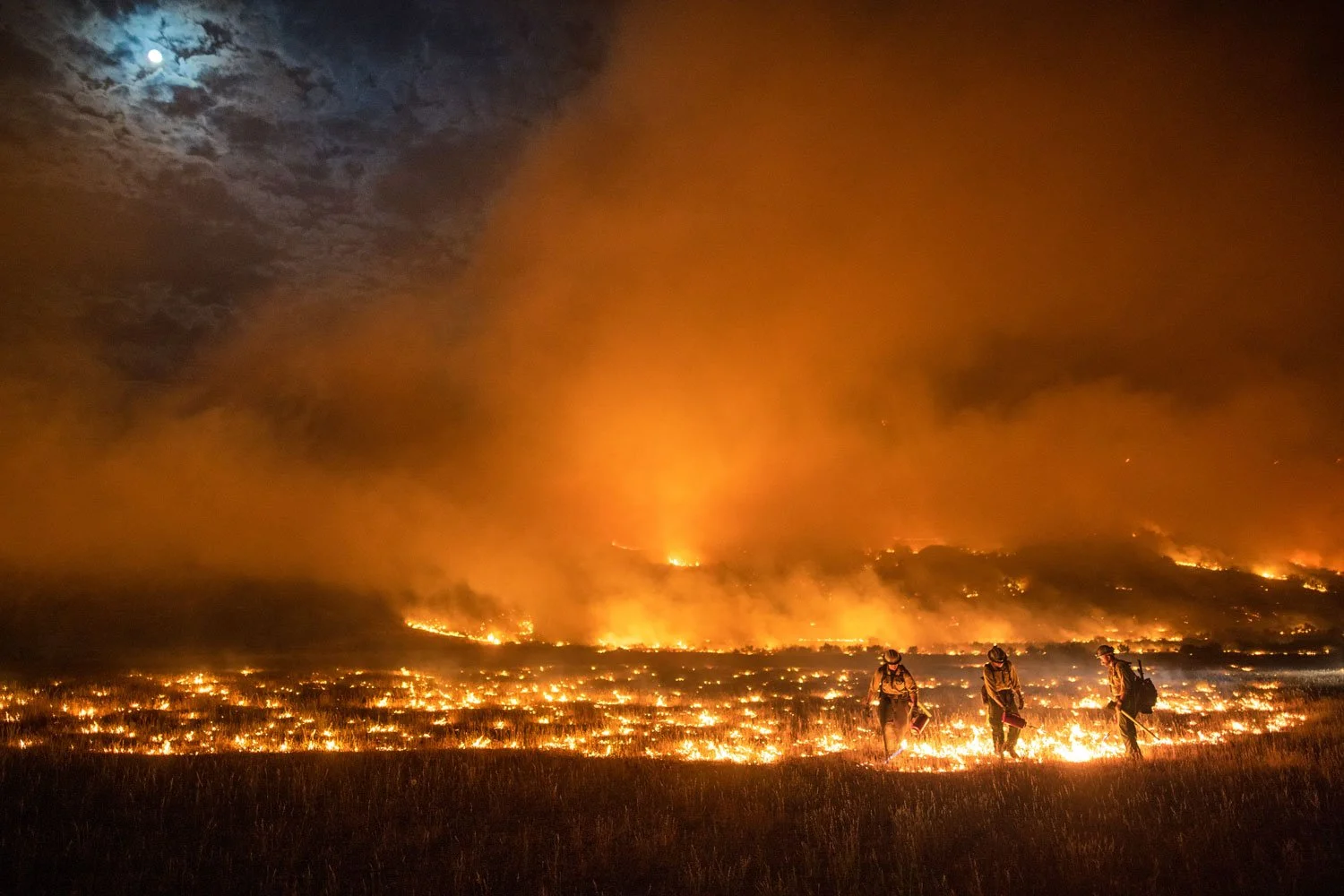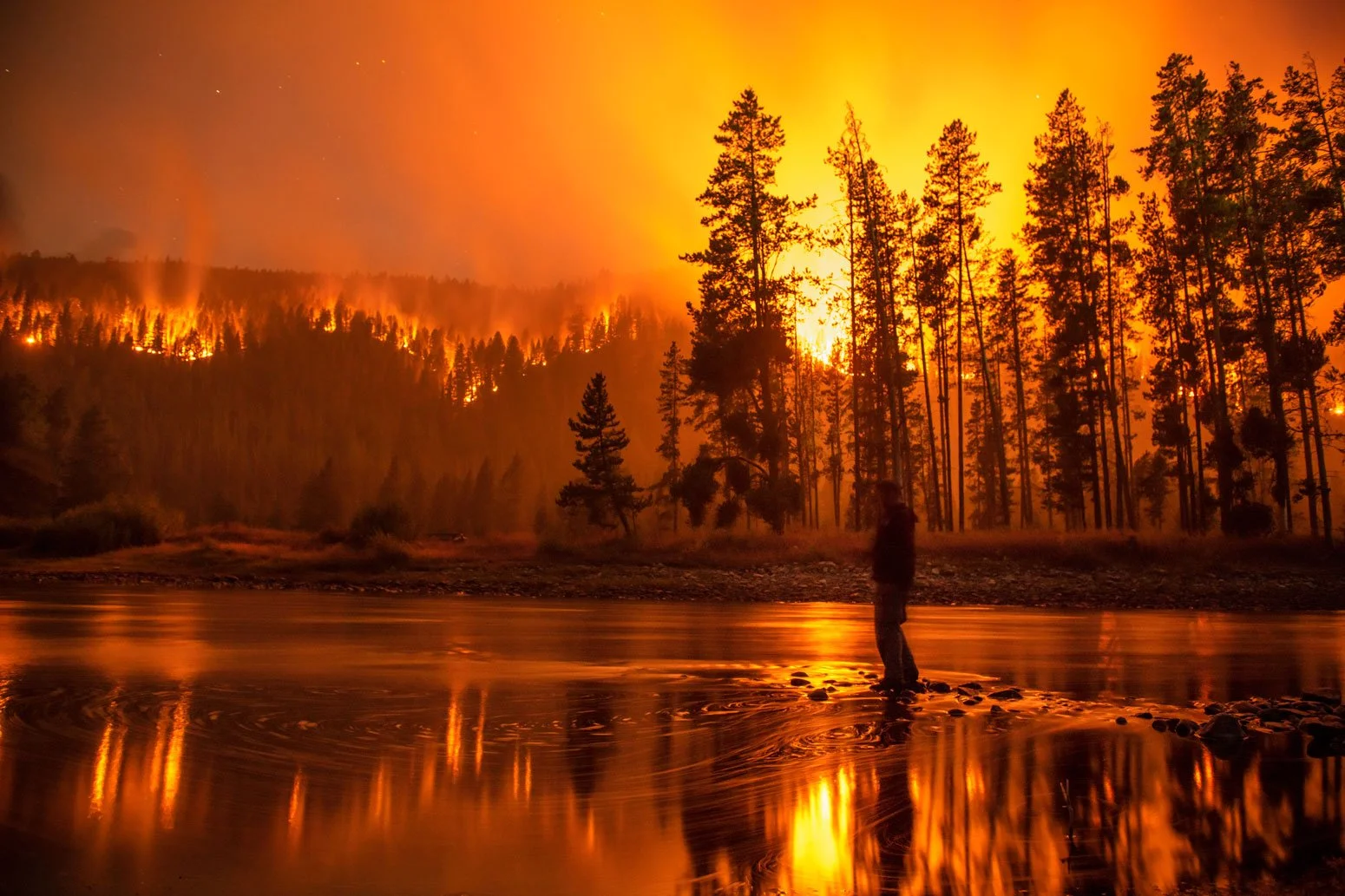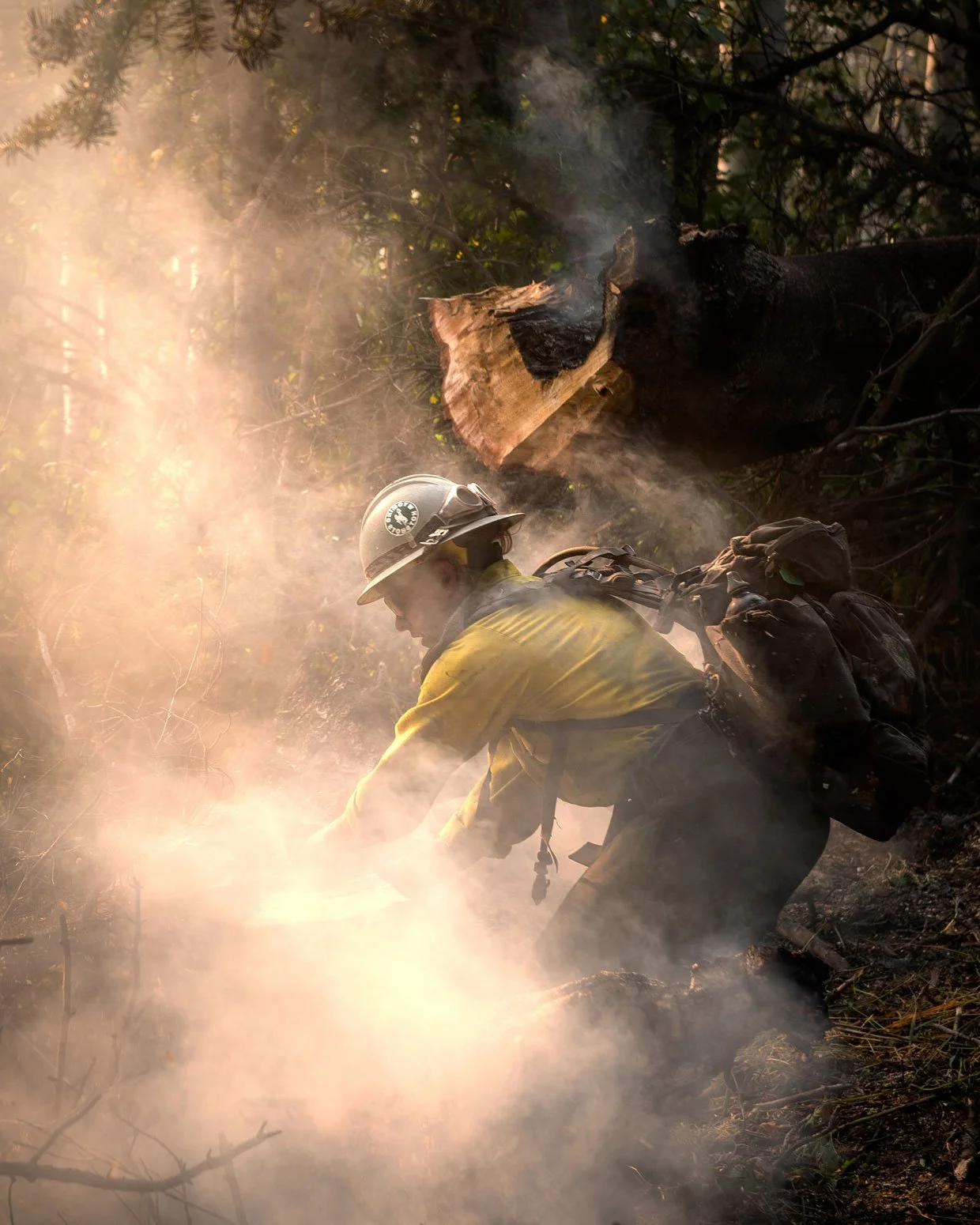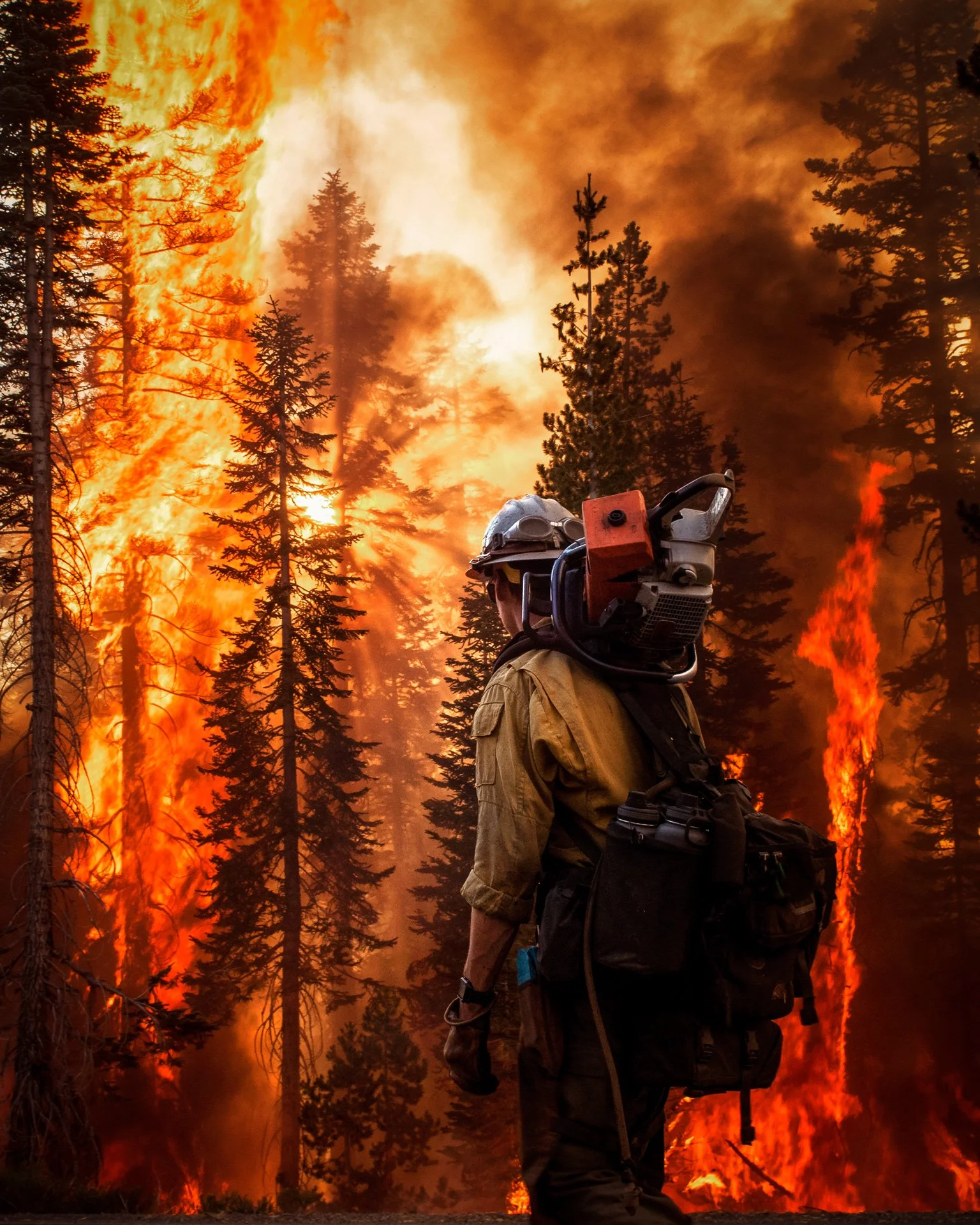
Our Purpose
The Grassroots Wildland Firefighters advocates for proper job classification, pay, benefits and comprehensive well-being for wildland firefighters. We educate the public, generate community support, and provide solutions to our elected officials through policy reform.
Our Vision
We envision a future where policies that affect wildland firefighters are formed with their well-being prioritized and voices included.
Our motto: Nothing about us, without us.
Strategic Priorities
Through outreach and engagement with the wildland firefighter community, we have identified four pillars that guide our advocacy work. We acknowledge these are complex and multifaceted issues spanning several government agencies; we have crafted these strategic priorities to address the core issues affecting wildland firefighters today.
The Why
Demands on federal wildland firefighters are increasing as the fire environment expands in complexity, size, and duration. The federal government has failed to keep pace with this changing dynamic and firefighters are left with increased mental illnesses, increased rates of cardiovascular and respiratory diseases, and pay that falls below minimum wages in many parts of the country.
We are at a tipping point. With a rapidly changing climate, the demands on federal wildland firefighters on the frontline have become year-round. These firefighters--who are not actually classified as firefighters, but rather given the misleading title of Forestry Technician--are resigning their federal positions for ones in state, municipal, and private industry that provide pay and benefits that are commensurate with the risk.
The issues are numerous and complex, ranging from lack of presumptive care for cardiovascular and respiratory disease, to the way our retirement benefits are structured. It includes detrimental work:life imbalance and the expectation that employees work up to 1500 hours of overtime every year. Moreover, the condition of our landscapes and the changing climate are creating extreme fire behavior that increases risk to wildland firefighters exponentially.
Historically, federal wildland firefighters have not had the means to advocate on their own behalf; we are changing that. Our efforts will make our diverse group of voices heard by leadership and our elected officials, creating change that prioritizes the health and well-being of our wildland fire workforce, leads to effective land and fire management, and results in generational resiliency.
Our Purpose
Fair Pay & Benefits
Increase in pay, on-call pay, retirement calculations based on overtime and base pay (same as federal Law Enforcement), the creation of a Wildland Firefighter Series (OPM classification), and buyback of temporary employment time toward retirement.
Issues & Resources
-
Wildland Firefighters such as Hotshots, Smokejumpers, Rappellers, Helitack Crews, Fire Engine Crews and others are actually titled as “Forestry Technicians” and the 2-page job classification document does not mention the word “fire” once. Curiously, the Bureau of Labor Statistics states that wildland firefighters are a “specialized type of firefighter.”
This is nothing new: Look back at 1991 here!
The Forestry Technician job title and series was implemented into written policy during the early 1970’s as a utility position that would allow the United States Forest Service to accomplish its dynamic and diverse land management mission with a single and primarily seasonal workforce. This utility player purpose was echoed in the early versions of the forestry technician position description (PD) 1. A Forestry Technician was expected to contribute to a multitude of project areas, including periodic and need based implementation as fire suppression “militia”. These positions were originally intended to establish a workforce that could aid forest service leadership in accomplishing holistic ecosystem management without being limited by title specificity.
Forestry Technicians were included in OPM’s 1991 job series update and continued under the classification that we are currently familiar with, GS-0462.1 At this time the position description of these employees remained unchanged, as did their intended purpose. During the 90’s, only 16% of the USFS budget went to fire suppression (2). If this is an indicator of what the agency was up to, it made perfect sense at that time to leave the Forestry Technician position description as it was.
The next two decades brought massive growth in wildfire management activity and cost as the repercussions of a full suppression ethic, unbridled WUI expansion, and apparent climate change manifested (3). Recent projections forecast suppression activities to take up 67% of the USFS budget in 2021 (2). The increasing occurrence of high consequence wildfires exposed an equally growing need for personnel with the primary directive of fire suppression within the Forest Service. This fell on the bulk of the USFS workforce, the Forestry Technicians. Currently, there are 196 sub-categories within the GS-0462 series who qualify for firefighter retirement and are described as Interagency Fire Program Management positions primarily tasked with some sort of fire suppression or adjacent duties (4).
The Forestry Technician job series was implemented to avoid over specialization of the workforce and maintain mission alignment as a land management agency. However, in an era of multi-billion-dollar fire seasons land management agencies have strayed far from that ideal. This comes at the detriment to both fire personnel who feel under-compensated and the essential non-fire federal land management project areas that still need access to an adequate workforce not constantly preoccupied with fire suppression, hazardous fuels reduction, and off-season fire specific training.
The federal government land management agencies currently sponsor the largest fire organization in the world. As such, the structure, training, qualifications, positions, and duties performed by the forestry technicians that staff this organization closely mirror that of a clearly defined fire suppression organization. However, our history reminds us that federal firefighters are intended to be more than just suppression specialists. They have made a clear choice to be a part of an organization with a mission that goes beyond simply suppressing fire.
Ideally during periods of low fire risk, federal firefighters will still serve an important role in the accomplishment of their agency’s mission by performing non-suppression land management tasks. This crossover is often cited by suppression personnel as a highly rewarding element of their job. Unfortunately, as fire seasons become more demanding on all fronts, the ability for program integration is made more and more difficult. The inability of federal firefighters to contribute elsewhere is exacerbated even more by current retention issues and vacancy rates. The four pillars being offered by GRWFF serve to reconcile the dynamic tension of the Forestry Technicians and the land management agencies that employ them. By accurately classifying federal fire personnel and compensating them adequately, we achieve the goal of increasing employee retention and reducing vacancy rates. Implementation of these pillars would allow federal firefighters to continue to contribute to a role that goes beyond just fire suppression, a role many take great pride in. A role best accomplished by both accurately identified federal firefighters, and an expanded land management workforce staffed by employees who are not continually obligated to fire management specific objectives.
U.S. Office of Personnel Management. December 1991. Position Classification Flysheet for Forestry Technician, GS-0462. Retrieved May, 2019 from https://www.opm.gov/policy-data-oversight/classification-qualifications/classifying-general-schedule-positions/standards/0400/gs0462.pdf
United States Department of Agriculture, USFS. 2017. Cost of Fire Operations. Retrieved May, 2019 from https://www.usda.gov/about-usda/news/press-releases/2017/09/14/forest-service-wildland-fire-suppression-costs-exceed-2-billion
Withen, P., Campbell, R., and Levenstein, C. 2015. Climate Change and Wildland Firefighter Health and Safety. NEW SOLUTIONS: A Journal of Environmental and Occupational Health Policy, 4:577-584.
United States Department of Agriculture, USFS, Human Resource Management. Position Description Search.
-
We hear you: Why our dispatchers matter.
Wildland Fire Dispatchers are highly trained, experienced fire personnel who serve a vital function in wildland fire operations.
Learn why the exclusion of Dispatchers, Equipment Operators, and others from a new Wildland Firefighter Job series could lead to negative impacts on wildland fire operations and safety.Special Grassroots Newsletter: Solidarity within the Wildland Fire Community
Dispatch Survey Results- Verble et al- 2022-2023 Surveys of Wildland Fire Dispatcher Environmental Health: Preliminary Results
Dispatch Overview- Comments/Suggestions on why the wildland fire dispatcher should be included in the wildland firefighter series, written collectively by a Center Manager, Assistant Center Manager, and Initial Attack Dispatcher.
Unintended Outcomes of the 0456 Series- GRWFF highlights Critical Issues/Unintended Outcomes Regarding New Wildland Firefighter Classification- What could happen if our dispatchers or other positions are not included?
More surveys and results- Includes the Figgins Dispatcher Report, 2022 Wildland Firefighter Environmental Health Report, and more!
-
Hazard pay is a 25% addition to a firefighter’s base pay — applied only to assignments classified as “hazardous.” This 50-year-old compensation system does not account for today’s professional workforce, for the demands of a year-round, increasingly severe fire season on a warming planet, or for the unanticipated hazards of a global pandemic.
Why Hazard Pay No Longer Works: Hazard Pay is Outdated
When the system of hazard pay was created in the 1970’s, wildfires were smaller and less frequent, and firefighting was not the professionalized industry it has become now, in the era of mega and even gigafires. Firefighters today are routinely exposed to hazards in prescribed burning, in project work such as roadside hazard tree removal, and in assisting with a broad range of non-fire emergency responses. In 2020, wildland firefighters were exposed to a hazard simply by traveling across county and state lines to respond to fires, or when staying in hotels while on assignment: the hazard of a deadly virus.
Firefighters are also frequently injured on the job, and unable to work on the fireline and losing 25% of their pay while recovering. Women who get pregnant or are raising young families, don’t want to be away from their homes for dozens (if not 100+) nights a summer, also lose 25% of their pay, making family life unsustainable with the current system. This increased burden on women and injured firefighters is another outcome from a system that relies on hazard pay.
Pay must reflect the reality: that we are routinely exposed to hazards on and off the fireline. A 21st century system of pay will account for this continual risk by paying firefighters more.
Other wildland firefighting agencies (Cal Fire, municipal fire departments, Oregon Department of Forestry, Washington Department of Natural Resources) long ago abandoned the practice of providing special pay only on the fireline; firefighters for these agencies are paid as firefighters at all times. Federal wildland firefighters are now seeking pay parity with these agencies.
The Definition of “Hazard” is Incomplete
So what, exactly, counts as “hazardous” under the system of hazard pay?
Tree climbing qualifies as a “hazard” only if firefighters climb to a height of 50’ or more with no scaffolding. Free climbing 49 feet? Not hazardous.
Mutual assistance responses, in which wildland firefighters help with rescue operations, traffic control and emergency medical care for traffic collisions -- not hazardous.
Ever jumped out of a plane? No? That’s probably because you considered it too dangerous. The federal government, however, does not allow hazard pay for parachute jumps.
Staying in a crowded hotel in a Covid-19 “hot zone” at the height of the pandemic is not an official “hazard.” Nor is entering a fire camp packed with other firefighters from all over the country or having to stop at dozens of gas stations and stores while traveling to a fire, all during the outbreak of a deadly virus.
Running a chainsaw to fell large, burned, or standing dead trees (incidentally called “hazard trees”) is not a hazard unless a fire is nearby.
Driving on dangerous, winding, unmaintained roads with sheer drop-offs in remote parts of our forests and parks is not a “hazard” while on patrol or in travel status -- only on a fire.
In an ultimate stroke of irony, hazard pay does not apply to prescribed burns, which can be as volatile as wildfire. Though smoke from planned burns contributes significantly to firefighters’ increased risks of cancer and cardiovascular disease, and while homes have been lost and members of the public killed from prescribed burning gone awry, this isn’t classified as “hazardous” work.
Helicopters have crashed* (killing firefighters) and firefighters have died when crushed by falling trees during prescribed burn operations -- yet this work is not a “hazard.”
Wildland firefighters face daily exposure to hazards on and off wildfires; the nature of the job is hazardous. Yet the current pay structure does not account for this pervasive risk.
*Those in the helicopter were in fact receiving hazard pay for low-level flight.
Hazard Pay Incentivizes Risky Behavior and Reactive Land Management
Opportunities for earning hazard pay vary substantially between fire seasons, creating an unpredictable income that makes it extremely difficult for firefighters and their families to plan financially. Entry-level firefighters, whose base pay begins at just $13.45 an hour, will take on as many fire (“hazard”) assignments as they possibly can, just to make ends meet.
Firefighters who work more than 1,000 hours of overtime end up in a state of cumulative fatigue that can lead to mistakes and accidents on the fireline. Trapped in a vicious cycle of overwork, it can be a short leap between a hazardous situation and a fatality fire.
Meanwhile, as fire seasons grow in duration and intensity, firefighters’ personal relationships suffer, and they end up burned out mentally, physically, and emotionally. A staggering 55% of wildland firefighters report thoughts of taking their own lives, and firefighters’ rate of death by suicide is 30 times that of the general public.
Additionally, valuable project work -- such as thinning the understory or conducting prescribed burns to create a healthier, more fire-resilient forest -- goes untouched in favor of assignments offering hazard pay. When proactive forest management goes undone, the land is more vulnerable to devastating fire. And when these high-intensity fires begin, firefighters necessarily spring into the reactive stance of fire suppression. Thus the cycle continues.
View Agency Chart: Hazard Pay vs. Professional Pay
The federal government is one of the last professional firefighting services still using this arcane system. Hazardous duty is the nature of the work of wildland firefighters, who respond nationally and internationally to every type of emergency incident, risking their lives and health to save other lives and protect property and our natural resources.
Federal wildland firefighters deserve a living wage on par with that of their state and municipal counterparts. It’s time to make a change.
Our Purpose
Firefighter Health & Wellbeing
We advocate for increased funding and support for those battling to stay healthy physically and mentally, including: Office of Workers’ Compensation Programs (OWCP) reform, access to year-round care for temporary wildland firefighters regardless of appointment, and long-term heart and lung care.
Issues & Resources
-
Grassroots Wildland Firefighters Request Expansion of Mental Health Programs and Support Services for Federal Wildland Firefighters and their Families.
Wildland Firefighter Mental Health Survey Released - June 2022
-
Smoke Exposure: wildland firefighters risk lung and cardiovascular disease without any coverage from their federal employers, leaving these firefighters on their own when they face the consequences of a job serving the public
The Federal Wildland Fire Agencies have all refused to acknowledge that smoke exposure is a problem for their workforce. Refusing to adopt industry standards of presumptive care for cancers and lung diseases contracted on the job, these employers leave it to their employees to pay for the consequences of public service. This isn’t right.
We recommend all employees file CA2 reports for smoke exposure whenever they are exposed to smoke on wildfires or prescribed fires. Lets all hope for better days ahead when the federal employers recognize the heroic sacrifices their firefighters are making year after year.
-
Federal Wildland Firefighter Request for Presumptive Health Coverage for Exposure to Environmental Hazards.
Secretary Walsh slated to discuss changes with firefighters’ union in Los Angeles
WASHINGTON – The U.S. Department of Labor issued a policy bulletin announcing changes by its Office of Workers’ Compensation Programs to assist federal firefighters with certain occupational illnesses by making it easier for claimants to file certain claims and improving transparency in how claims are processed.
The Centers for Disease Control and Prevention reports that cancer is a leading cause of death among firefighters, and research suggests firefighters are at increased risk of certain types of cancers compared to the general population. Each year, OWCP receives approximately 2,600 workers’ compensation claims from federal firefighters. Of those, about 175 claims include conditions such as cancer, heart disease and lung disease.
“Among our nation’s public service workers, federal firefighters are some of the bravest,” said Office of Workers’ Compensation Director Christopher J. Godfrey. “Historically they have faced unique challenges in establishing causation for occupational disease claims. The policy changes we are making will help us improve our service to federal firefighters and assist them through the claims process.”
Later today, Secretary of Labor Marty Walsh and OWCP Director Godfrey are scheduled to meet with members of the International Association of Fire Fighters and the National Federation of Federal Employees in Los Angeles to discuss the policy changes.
The “Special Case Handling in Certain Firefighter FECA Claims Processing and Adjudication” bulletin puts into effect changes to ease the evidentiary requirements needed to support claims filed by federal employees engaged in fire protection and suppression activities for certain cancers, heart conditions and lung conditions.
To implement the policy changes, OWCP has created a special claims unit to process federal firefighters’ claims. The unit consists of existing staff specifically trained to handle these claims. The agency is also providing comprehensive training to the unit’s examiners on the impacts of the policy changes, and working with federal agencies including the departments of Agriculture, Defense, Homeland Security and Interior to explain the changes in policy and procedures.
Learn more about the Office of Workers’ Compensation.
Coverage Include:
1. Esophageal Cancer
2. Colorectal Cancer
3. Prostate Cancer
4. Testicular Cancer
5. Multiple Myeloma
6. Non-Hodgkin’s Lymphoma
7. Leukemia
8. Kidney Cancer
9. Bladder Cancer
10. Brain Cancer
11. Lung Cancer
12. Mesothelioma
13. Buccal Cavity / Pharynx Cancer
14. Larynx Cancer
15. Melanoma
16. Thyroid Cancer
17. Hypertension
18. Coronary Artery Disease
19. A sudden cardiac event or stroke while, or not later than 24 hours after, engaging in engaged in the prevention, control, and extinguishment of fires or response to emergency situations where life, property, or the environment is at risk, including the prevention, control, suppression, or management of fires
20. Asthma
21. Chronic Obstructive Pulmonary Disease (COPD)
22. Pulmonary Fibrosis
Our Purpose
Strategic Workforce
We believe a strategic workforce is needed to solve the current limited staffing and hazardous fuels reduction crises as fire season grows longer, recognizing that at current staffing levels, federal wildland firefighters are expected to work anywhere from 500-1500 hours of overtime year after year.
As catastrophic wildfires increase in frequency and intensity across the United States, GWF is working on a project to fill the critical knowledge gap through a comprehensive, data-driven analysis of wildland firefighter workforce capacity. The project will create the first ever holistic assessment that identifies values at risk and defines, quantifies, and locates the full wildfire suppression and vegetation management workforce across jurisdictions nationwide. This foundation is essential for transitioning from reactive suppression to proactive management and creating resilient landscapes and communities.
Issues & Resources
-
Despite the escalating wildfire risk across the United States, we currently operate without the crucial data-driven analysis needed to identify necessary workforce capacity across federal, state, tribal, local, and private sectors.
-
Historically, workforce planning has been constrained within existing budgets rather than response to actual mission needs. This reactive approach prevents decision-makers from defining true operational requirements, perpetuating cycles of underinvestment, reactive suppression, and missed opportunities for proactive risk reduction.
-
Limited data exists on resource sheds (water, fire, air, timber, recreation), and their correlated value to risk. It is our desire to quantify vegetation management workload, and align workforce needs with risk patterns and economic value.
Our Purpose
Federal Wildland Fire Service
Reduce cost and increase efficiency by maintaining a highly skilled workforce dedicated to the task of managing wildfires, rather than multiple agencies with redundant administrative positions
Our Visions For NWFS
Since our inception, it has been one of our organizational pillars (Pillar #4) to establish a National Wildland Fire Service (NWFS) to the benefit of the boots on the ground. This new agency would consolidate all wildland fire management responsibilities from the five separate federal land management agencies (US Forest Service, Bureau of Land Management, National Park Service, US Fish and Wildlife Service, and Bureau of Indian Affairs) into a single, cohesive agency.
The new agency should be a comprehensive wildland fire management agency and should be run by experienced wildland fire practitioners and managers. We are optimistic about the discussion this new legislation will generate, but there are few specifics on how it will be implemented. GWF is the organization that can provide those details. We have worked for years behind the scenes developing a framework for a NWFS, and are the ideal subject matter experts for how this legislation should be implemented.
In the interim, we strongly recommend that wildland fire programs are immediately “stove-piped” under the US Forest Service and each DOI agency, removing current line officers from the chain of command and decision-making authority.
How has our advocacy or access to resources made a difference for you or others in the Wildland Fire community?
-
The foundation has set the baseline to push change in the federal workforce. Without the advocacy to push for the changes the employees wanted, the fire agencies, most likely, would have fully collapsed by now.
—California Wildland Firefighter
-
We wouldn’t be where we are today without the efforts of Grassroots. This was the spark that got the conversation started, and became the launchpad that NFFE advocated from.
—California Wildland Firefighter
-
I have been out of the feds for 2 years 11 months. I had resigned but seeing the work you guys are putting in has finally got me back in the game and running my engine out of Shasta trinity.
—California Wildland Firefighter
-
We’re finally getting decent pay, I’m finally titled correctly after a decade of being in the fire service.
—Wyoming Wildland Firefighter
-
I am the wife of a superintendent on a handcrew, and he is gone more often than home. Grassroots has brought attention not only to the plight of our WLFF's but to their families. Low pay, health issues, and relationship fallouts are a reality in this industry due to the lack of resources and support. By bringing attention to these things and fighting for better resources and standard procedures legally, your team is our champion.
—Family of Wildland Firefighter
-
You give those a voice who other wise wouldn’t have one.
—Montana Wildland Firefighter





